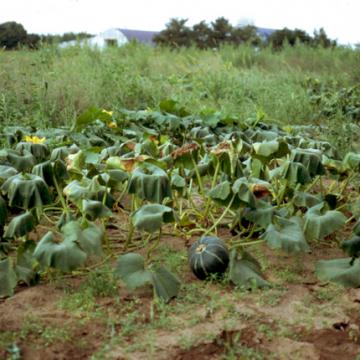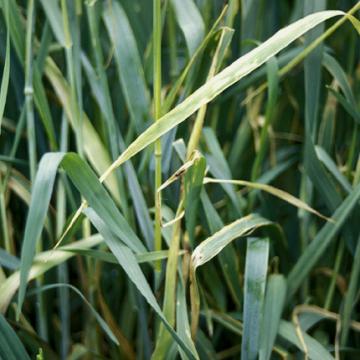DISEASE: Bacterial leaf streak
HOST: Oat
Leaf with long, dark red streaks.

Bacterial leaf streak | Oat
DISEASE: Bacterial leaf streak
HOST: Oat (Avena sativa)
PATHOGEN: Xanthomonas translucens pv. cerealis
SOURCE: L. Claflin
DISEASE: Bacterial stripe (Blight)
HOST: Oat
Leaves with irregular necrotic spots and elongated stripes that are light tan in the center. Symptoms begin as water-soaked lesions.
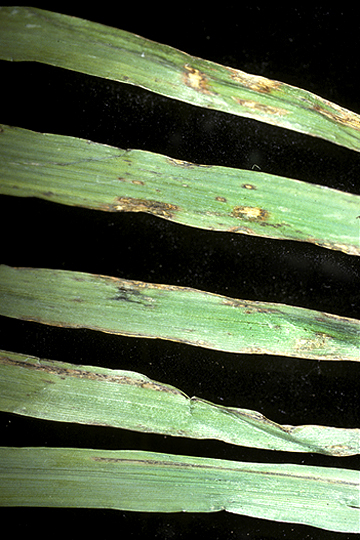
Bacterial stripe (Blight) | Oat
DISEASE: Bacterial stripe (Blight)
HOST: Oat (Avena sativa)
PATHOGEN: Pseudomonas syringae pv. striafaciens
SOURCE: S. Thomson
DISEASE: Bacterial wilt
HOST: Squash
Field with severe symptoms of wilt. Foliage often is chlorotic and leaf margins may be chlorotic and necrotic before plant death. Bacterial ooze may be seen streaming from the xylem when infected stems are cut.
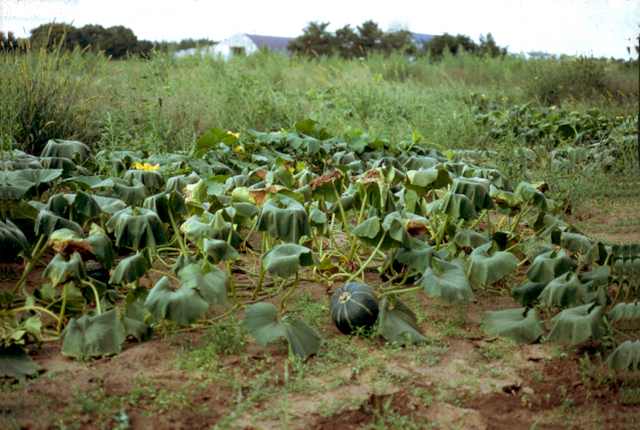
Bacterial wilt | Squash
DISEASE: Bacterial wilt
HOST: Squash (Cucurbita maxima)
PATHOGEN: Erwinia tracheiphila
SOURCE: B. Jacobsen, M. Shurtleff
DISEASE: Halo blight
HOST: Oat
Oat leaves with oval lesions that darken in time and have distinctive yellow halos.

Halo blight | Oat
DISEASE: Halo blight
HOST: Oat (Avena sativa)
PATHOGEN: Pseudomonas syringae pv. coronafaciens
SOURCE: N. Schaad
DISEASE: Halo blight
HOST: Oat
Close-up of young and old lesions surrounded by halos.
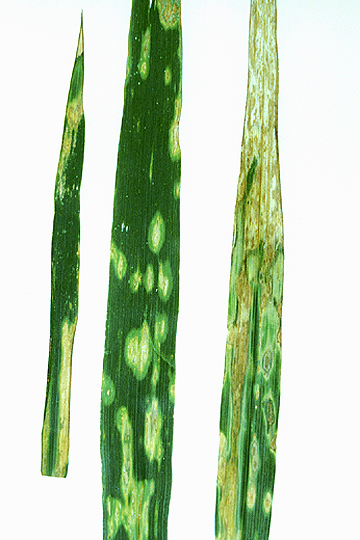
Halo blight | Oat
DISEASE: Halo blight
HOST: Oat (Avena sativa)
PATHOGEN: Pseudomonas syringae pv. coronafaciens
SOURCE: N. Schaad
DISEASE: Olive knot
HOST: Olive
Multiple infections of young stems. The bacterium invades vascular tissues during certain times of the year and may be isolated from branches that appear healthy.

Olive knot | Olive
DISEASE: Olive knot
HOST: Olive (Olea europaea)
PATHOGEN: Pseudomonas savastanoi pv. savastanoi
SOURCE: M. Schroth
DISEASE: Olive knot
HOST: Olive
Tree with knots/galls on branches along with twig dieback, which is associated with knots. Fusarium and Diplodia spp. infect through knots and are thought to be main reason for dieback.

Olive knot | Olive
DISEASE: Olive knot
HOST: Olive (Olea europaea)
PATHOGEN: Pseudomonas savastanoi pv. savastanoi
SOURCE: M. Schroth




